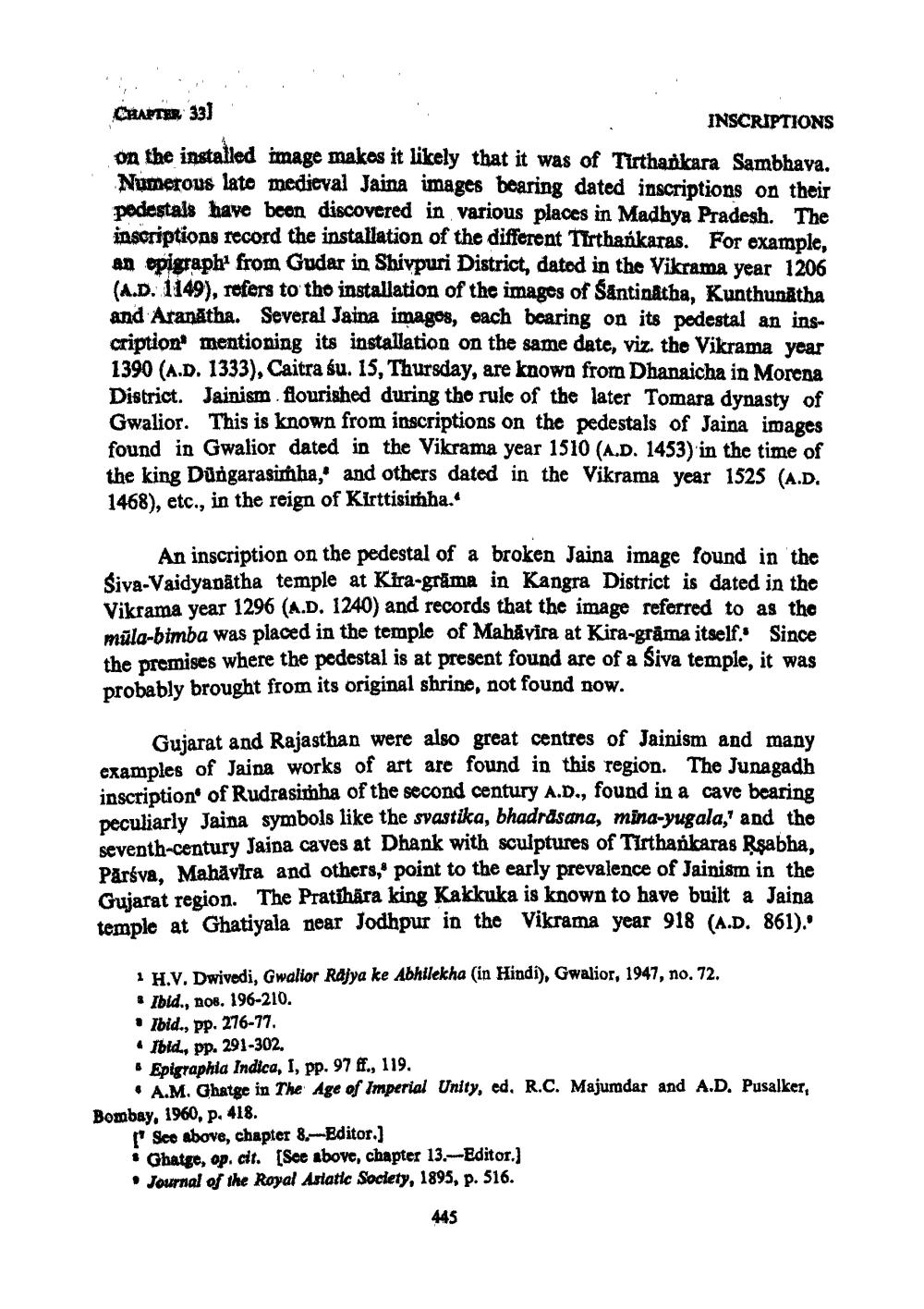________________
CHAPTER 331
INSCRIPTIONS on the installed image makes it likely that it was of Tirtharkara Sambhava. Numerous late medieval Jaina images bearing dated inscriptions on their pedestals have been discovered in various places in Madhya Pradesh. The inscriptions record the installation of the different Tirthańkaras. For example, an epigraph from Gudar in Shivpuri District, dated in the Vikrama year 1206 (A.D. 1149), refers to tho installation of the images of Såntinatha, Kunthunatha and Aranatha. Several Jaina images, each bearing on its pedestal an inscriptions mentioning its installation on the same date, viz. the Vikrama year 1390 (A.D. 1333), Caitra su. 15, Thursday, are known from Dhanaicha in Morena District. Jainism flourished during the rule of the later Tomara dynasty of Gwalior. This is known from inscriptions on the pedestals of Jaina images found in Gwalior dated in the Vikrama year 1510 (A.D. 1453) in the time of the king Düngarasimha, and others dated in the Vikrama year 1525 (A.D. 1468), etc., in the reign of Kirttisimha.
An inscription on the pedestal of a broken Jaina image found in the Siva Vaidyanatha temple at Kira-grāma in Kangra District is dated in the Vikrama year 1296 (A.D. 1240) and records that the image referred to as the müla-bimba was placed in the temple of Mahāvira at Kira-gråma itself.: Since the premises where the pedestal is at present found are of a Siva temple, it was probably brought from its original shrine, not found now.
Gujarat and Rajasthan were also great centres of Jainism and many examples of Jaina works of art are found in this region. The Junagadh inscription of Rudrasimha of the second century A.D., found in a cave bearing peculiarly Jaina symbols like the svastika, bhadrdsana, mina-yugala," and the seventh-century Jaina caves at Dhank with sculptures of Tirtharkaras Rsabha. Pårsva. Mahāvira and others,' point to the early prevalence of Jainism in the Gujarat region. The Pratihära king Kakkuka is known to have built a Jaina temple at Ghatiyala near Jodhpur in the Vikrama year 918 (A.D. 861).
* H.V. Dwivedi, Gwalior Rajya ke Abhilekha (in Hindi), Gwalior, 1947, no. 72.
Ibid., nos. 196-210. • Ibid., pp. 276-77.
Ibid., pp. 291-302. * Epigraphia Indica, I, pp. 97 ff., 119.
• A.M. Ghatge in the Age of Imperial Unity, ed. R.C. Majumdar and A.D. Pusalker, Bombay, 1960, p. 418.
See above, chapter 8 - Editor.) Ghatge, op. cit. (See above, chapter 13.--Editor. • Journal of the Royal Astatic Society, 1895, p. 516.
445




